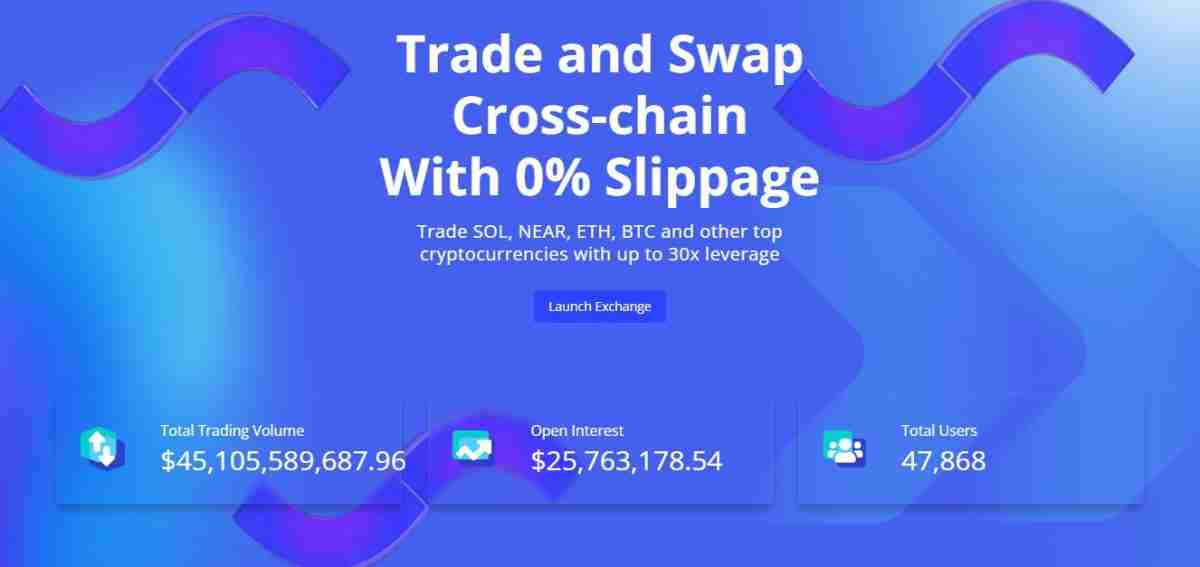What Is Tsunami finance (NAMI)?
Tsunami finance provide a way to trade with 0% slippage, known exit liquidity, low funding fees, a low spread, and collateral that grows in value over time. They provide a way to earn passive yield on your investments with less impermanent loss than typical AMMs AND with much higher upside. Tsunami Finance recognizes all of these existing problems and intends to create the best trading and LP experience given a world of constantly evolving technology and trade offs.
Tsunami finance aim to build a product that is extremely easy, fun, and delightful to use from a trader and an LPs perspective. They have decided to take a new model to facilitate trade. One that serves both LPs and traders better than they believe has ever been done before. And while such a statement is ambitious, if not ludicrous, they are confident can deliver.
Tsunami finance Storage Key Points
| Coin Basic | Information |
|---|---|
| Coin Name | Tsunami finance |
| Short Name | NAMI |
| Circulating Supply | N/A |
| Total Supply | N/A |
| Source Code | Click Here To View Source Code |
| Explorers | Click Here To View Explorers |
| Twitter Page | Click Here To Visit Twitter Group |
| Whitepaper | Click Here To View |
| Support | 24/7 |
| Official Project Website | Click Here To Visit Project Website |
Spot Traders and LPs Everywhere Are Underserved
While AMMs have taken spot trading from with decentralized exchanges, reality has shown the blemishes and imperfections with such models. With constant product curves, traders experience significant slippage and open themselves to risk-free front running by others in the system. While traders have it tough, Tsunami finance are the real losers in AMMs. They fundamentally make markets and sell volatility. The problem is that LPs sell volatility way too cheaply and end up always making losing trades to external agents in the system.
At first, many brushed off these losses as IL, or impermanent loss, but they have observed that these losses tend to become permanent over time and represent a failure of the constant product curve to fairly quote the price of assets. Slippage, Front running incentive. Activity is unsustainable and ends up destructive to the capital of LPs, LPs get arbitraged, sell volatility too cheaply, and sustain a not-so-impermanent loss.
Perpetual And Margin Traders are Underserved
Virtual Tsunami finance attempted to bring a solution to perpetual futures trading, but after more than a year of observing such systems, obvious cracks have begun to form. These problems originate from the constant product curve that Uniswap brought to crypto. One difference is that there are no LPs in a VAMM, rather traders trade in a somewhat peer to peer zero sum fashion.
Liquidity and slippage are the main issues at play here. Because a constant product curve is instantiated with particular assets at particular prices, once the market deviates from those prices, traders end up experiencing worse slippage. This has come to be known as the re-pegging problem with VAMMs.
And while some protocols claim to be able to mitigate concerns related to re-pegging, they introduce further uncertainty into the systems when they do so. For every re-pegging that occurs, one trader will have an instantaneous gain and another will have a loss.
CLOBs
For spot, futures, and options trading, central limit order books are some of the best mechanisms for facilitating trade. They have great price discovery, enable dynamic market-making strategies, and possess the most customization out of any option. The problem is that CLOBs are very expensive to run on-chain and they are almost entirely inaccessible for the public to become market makers in any profitable function.
How does being a LP work?
Tsunami finance such a basket, arbitrary assets with arbitrary weights are defined ahead of time. Each basket is usually comprised of 50% stables and 50% blue chip crypto native assets. Let’s take an example where Tsunami starts with a basket of LUNA and UST. They pre-determine that this basket’s “Target Weights” should be 50% Luna and 50% UST, to match the ratio of 50% stables and 50% crypto.
The target weight is measured as the USD value equivalent of that asset compared to other assets in the basket. In this example, let’s assume the price of LUNA is $100 USD and the price of UST is $1. Tsunami then instantiates the basket with 1 unit of LUNA and 100 units of UST.
Trading
When a user trades an asset, Tsunami finance uses price oracles to look up the price of the asset the user wants to swap from and the price of the asset the user wants to swap to. Then the protocol determines the deltas of the weights of the two assets being traded. Tsunami calculates the change in the actual weight of the from asset and the change in the actual weight of the to asset that would result from the transaction.
Once the protocol has the two weight deltas, the protocol then takes the delta that impacts the protocol worse, and uses that worse delta to determine the spread to charge to a trader. By doing so, Tsunami finance are instantiating the basket with actual weights being equivalent to the target weights of 50/50.






